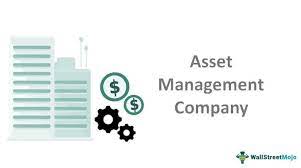As a business or organization, for you to establish strong managing receivables. You must know the tools, policies, accounts, and what is often the most critical part of managing receivables with motives.
Managing Receivables
Managing accounts receivable is critical for any firm, as day-to-day activities rely heavily on it. Moreover, it is where you must take money to pay your staff, fund your company’s daily expenses, and build the firm, thus payments must be received on schedule.
Organizations are obliged to use money in their reserve that was meant for other purposes since they do not have the expected funds.
Furthermore, businesses that file bankruptcy typically have issues that come from an inefficient collection system. As they were unable to collect what their clients had failed to pay.
Thus according to surveys, one out of every four small businesses has difficulty managing their accounts receivable. Due to various clients who either underpay them, pay beyond the terms provided, or are simply unable to pay to owe to financial setbacks caused by the economic downturn.
These Issues Can Be Overcome by Following a Few Simple Steps To Improve the Managing of Your Accounts Receivable
#1. Examine your financial and credit history
Perform a background check on any company’s financial and credit history before committing to do business with them. If required, seek feedback from other organizations with whom they have previously done business.
Some firms already have a big list of overdue credit. which is a better sign that they are having financial difficulties. Hence, It’s advisable not to enter into long-term agreements with them until they’ve entirely resolved their financial issues.
Consider offering conditions that are reasonable for them. while remaining beneficial to your organization when dealing with companies that have a history of late payments.
#2. Establish Specific Payment Terms
Establish clear payment terms between your client and your organization.
Give your client an estimation of the expenditures they will incur. And also bargain a comfortable arrangement for them that does not jeopardize your company’s profit.
#3. Utilize Electronic Invoicing
Snail mail is no longer the only option to deliver invoices to clients’ doorsteps. Moreover, Businesses can now send invoices via email using apps that are available on the internet thanks to advances in technology.
You also don’t have to wait for monthly cycle billings. because you may send invoices as soon as the tasks are finished. Moreover, Sending bills on time might assist clients to prepare for the due date.
The excellent thing is that many of these invoice applications feature built-in indications that show when clients have seen the email. Thereby, making it harder for them to justify late payments. We’ll be looking at tools in managing receivables.
Tools in Managing Receivables
When your collections system is coming up short, there are a few accounts receivable managing tools that are always useful to use. We’ve listed them all below.
Policy on credit and collections has been updated
Do you have a credit and collection policy in place, that spells out the rules and procedures that sales and collectors must follow? This can be a useful tool for ensuring that salespeople and collectors. To adhere to best practices and procedures geared to enhance sales while also safeguarding your firm from bad debt.
Previous research has indicated that only around 20% of credit departments have defined policies (Credit Research Foundation). And more than 50 percent of those who do have one fail to update it on a regular enough basis for it to be effective (Credit Today).
Software for automation
Simply having a credit and collections policy in place is not enough. Moreover, it does not guarantee that it will be implemented by your team, particularly when it comes to collecting invoices. Meanwhile, We are not implying that firm collectors intentionally skip processes. But they may forget one or not have the time to complete each and every step with each and every invoice.
Furthermore, accounts managing receivables automation allows you to incorporate your rules and procedures into the system. Which eliminates the need for collectors to recall the steps and saves them a significant amount of time. When you use accounts managing receivables automation, the system either accomplishes the steps in the process you’ve set automatically or instruct the collector to do so.
Adding more Employees
Many businesses who believe their accounts managing receivables performance is bad to believe it is due to a lack of personnel. Typically, the first impulse is to hire another person to help with the overwhelming burden. By automating the process, you may often eliminate the need for additional staff and the accompanying costs. In other circumstances, a part-time employee or another full-time employee may be absolutely necessary.
Delivery and Payment of Electronic Invoices
If you’re still using paper to manage the billing and collection process, it’s time to retire it in 2016. Meanwhile, Snail-mailing bills and waiting for clients to receive, process, and return checks can add several days to the invoice-to-cash process. Furthermore, it exposes your client to the risk of fraud. You may submit invoices and receive payments from consumers online with electronic invoice presentment and payment systems (EIPP). Additionally, t is technology makes collecting customer payments considerably faster, easier, and less costly than traditional paper-based operations.
Self-service options for customers
More than 70% of clients, particularly those in small and medium-sized businesses. Prefer self-service solutions such as an online portal to phone or email help. You can’t really blame them. Everyone is busy, and no one wants to waste time during work hours playing phone tag or waiting for email responses. However, you may give them this power by providing an online portal where they can access 24 hours a day, seven days a week to retrieve invoices, pay bills, ask inquiries, Moreover, view statements, chat with support people, and more. You can greatly enhance on-time payments and client satisfaction by providing consumers the control and comfort they desire. It truly is a win-win situation.
Armed with these four tools, or even just one of them, you’ll be astonished at how rapidly you can minimize the amount of outstanding A/R on your books, resulting in healthy cash flow and happier clients.
Policies for Managing Receivables
Having known the tools in managing receivables. Below are policies for managing it.
Policies for managing receivables: Send Invoices Right Away
To begin, ensure that your company sends invoices and account statements on time. so that your customers are aware that a payment is due. An automated email is crucial in this situation. Furthermore, implementing software that automatically emails your customers well before and on the due date will go a long way toward ensuring prompt payment. (It will also save your team precious hours.) Meanwhile, D&B Finance Analytics Receivables Intelligence Collections Management automates this procedure with templated emails that include linked account statements and invoices.
Policies for managing receivables: Make Payments Simple
If you send an automatic email informing your customer that their payment is due tomorrow. Then make sure they have a mechanism to pay you immediately online. Moreover, Waiting for cheques to arrive in the mail contributes to a decrease in cash flow. Whereas many B2B companies still send paper checks, the trend is toward digital payments.
Keep an eye on late-paying accounts.
Notwithstanding your best efforts, some accounts will pay late or not at all. So, Keep an eye out for clients who don’t pay on time. They may have disputed an invoice; first, you should resolve any internal issues such as billing errors, price discrepancies, and deductions. This is yet another reason why using A/R management software is more efficient and cost-effective than the manual process. Slow-paying customers, on the other hand, may require more hands-on treatment, such as phone calls, written letters, and involvement with your sales representative. Moreover, It is preferable to try to collect payment yourself before turning it over to a third-party collections agency or writing it off as a bad debt.
Motives of Managing Receivables
Every business wishes to purchase low and sell high with a good market price. However, they risk losing everything if receivables are not managed properly at the last stage of the sales process (payment). Moreover, poor receivables management is responsible for more than half of all bankruptcies, demonstrating its significance. Meanwhile, proper motives for managing receivables entail far more than simply reminding consumers to pay. It is also necessary to determine the motives for nonpayment. Is it possible that a product or service was not delivered? Or was the invoice tainted by an administrative error? Good motives for managing receivables is a multifaceted process that includes:
- determining the customer’s credit score ahead of time is a good motives for managing receivables.
- Scanning and monitoring customers for credit risks on a regular basis
- Keeping up with customers
- Detecting late payments in a timely manner
- Detecting problems in a timely manner
- lowering the total unpaid balance (DSO)
- Preventing any bad debt in outstanding receivables
Why Is It Important To Manage Receivables?
Bad debt is reduced with efficient receivables management, which in turn increases profit. Better cash flow and more liquidity for your company’s investments and acquisitions are two advantages.
What Does Managing Accounts Receivable Mean?
Payments due to your company for already provided goods or services are referred to as accounts receivable (AR). The process of ensuring that these payments are made on schedule, consistently, and dependably is known as proper AR management.
What Function Does the Manager of Accounts Receivable Perform?
Manager of Accounts Receivables is a mid-level position. It is the position in charge of managing the organization’s accounts receivable division and staff, as well as collecting all payments on the company’s behalf. Additionally, it involves making sure corporate policies are followed and payment deadlines are met.
What Other Title Would a Manager of Accounts Receivable Have?
Payables/Receivables Managers are another name for account receivable managers. Managers of accounts receivable are also in charge of their company’s overall financial stability.
Conclusion
Managing receivables helps you save a lot of stress with the appropriate tools.
Managing Receivables FAQ’s
How receivables are managed?
An Account receivable management process involves the following : Credit rating i.e the paying ability of the customers shall be reviewed before agreeing to any terms and conditions. Continuously monitoring any risk of non-payment or delay in receiving the payments.
What are the tools in managing receivables?
- UPDATED CREDIT AND COLLECTIONS POLICY. Do you have a credit and collection policy in place that outlines the rules and processes for sales and collectors to follow? …
- AUTOMATION SOFTWARE. …
- MORE EMPLOYEES? …
- ELECTRONIC INVOICE DELIVERY AND PAYMENT. …
- CUSTOMER SELF-SERVICE OPTIONS.
Why is it important to manage receivables?
Good receivables management will directly contribute to your businesses’ profit due to its ability to reduce bad debt. The benefits include a better cash flow and higher availability of liquidity for your business’s investments and acquisitions.
- Managing Receivables: Policies For Receivables And Collection
- Business Software: 27+ Best Software & Programs For Your Small Businesses
- Project Time Management: Processes, Tools & Software for Effective Management
- Accounts Payable vs Accounts Receivable Detailed Comparison)
- Accounts Receivable: Examples, Process, Formula & Free Tips






